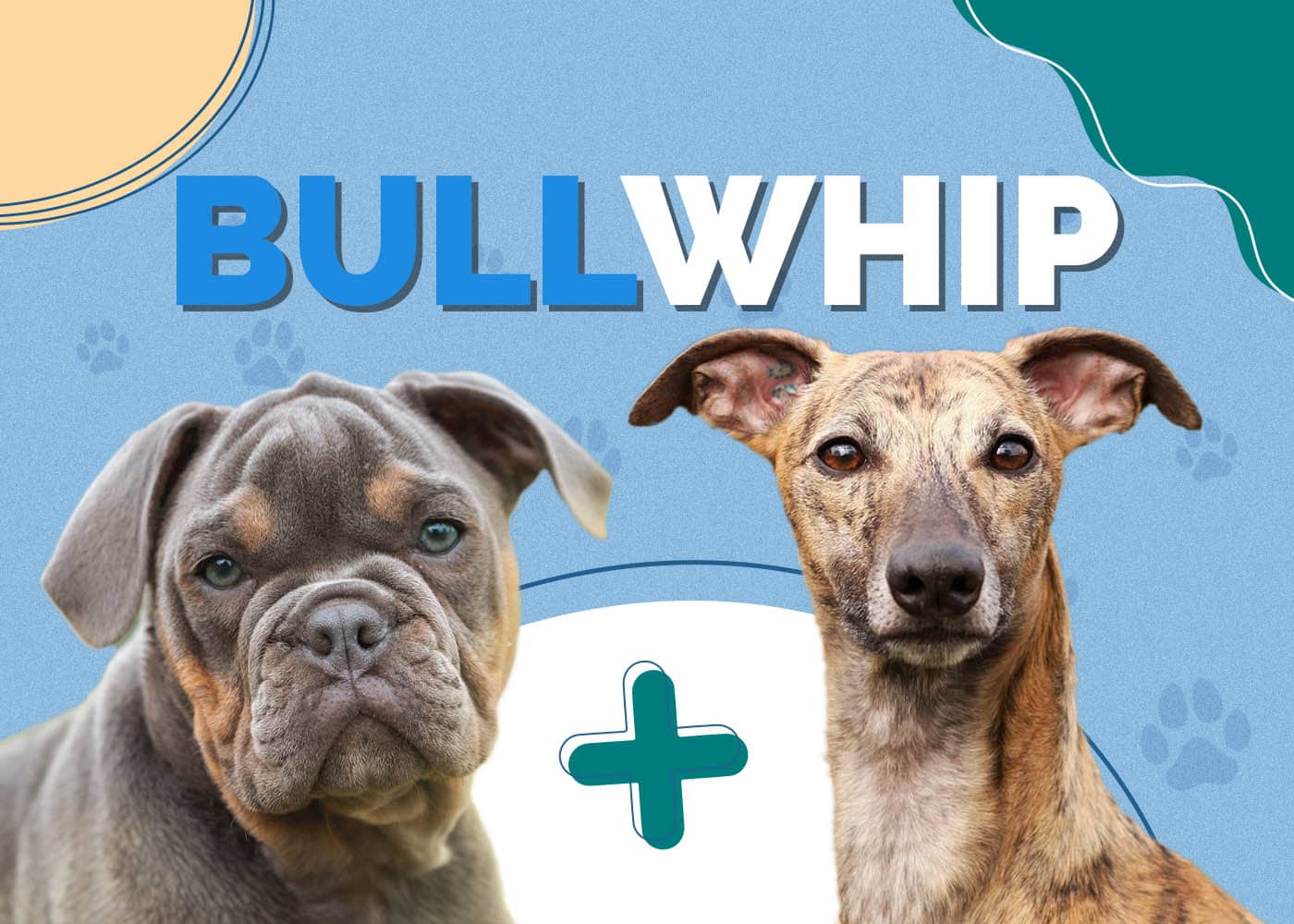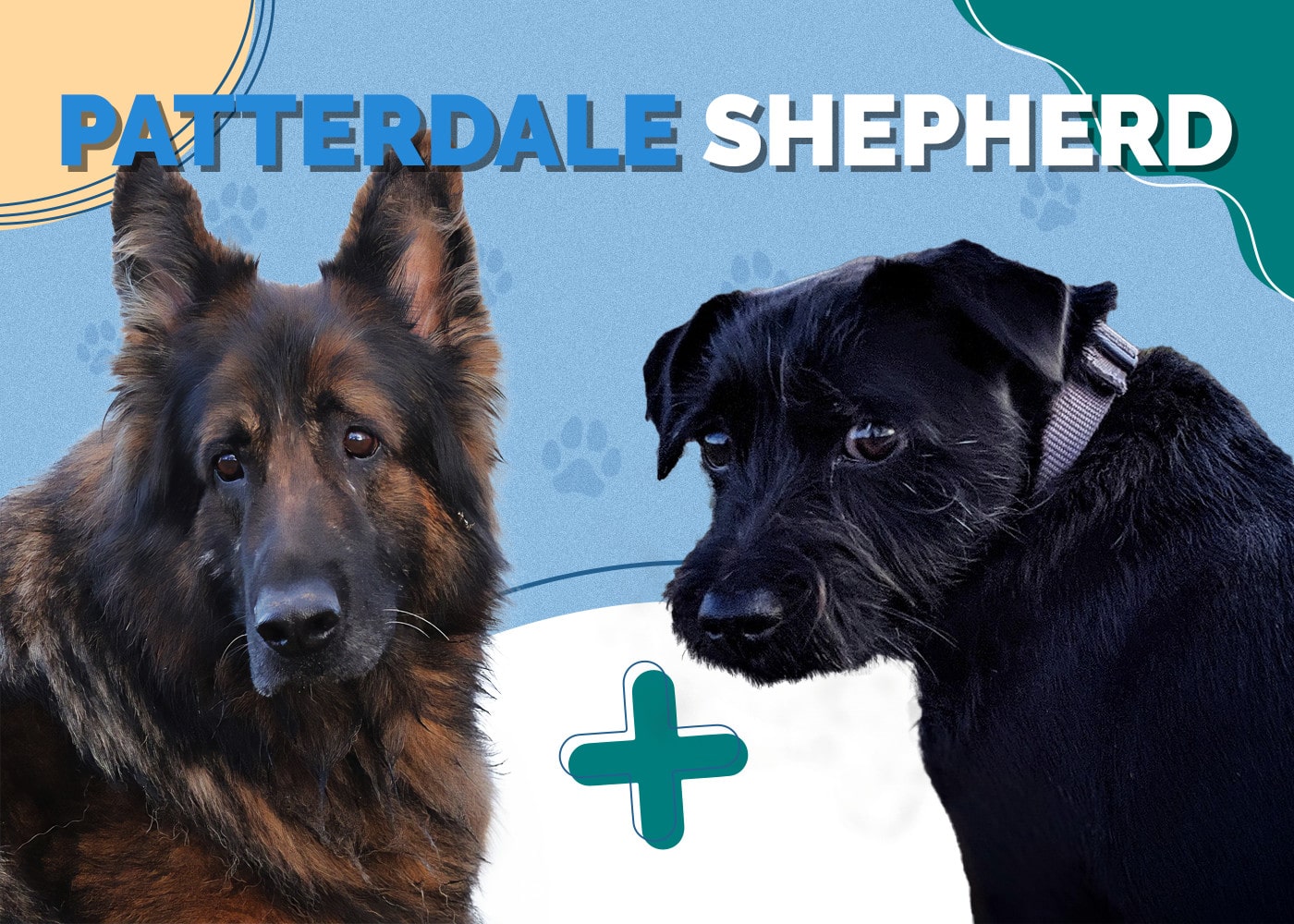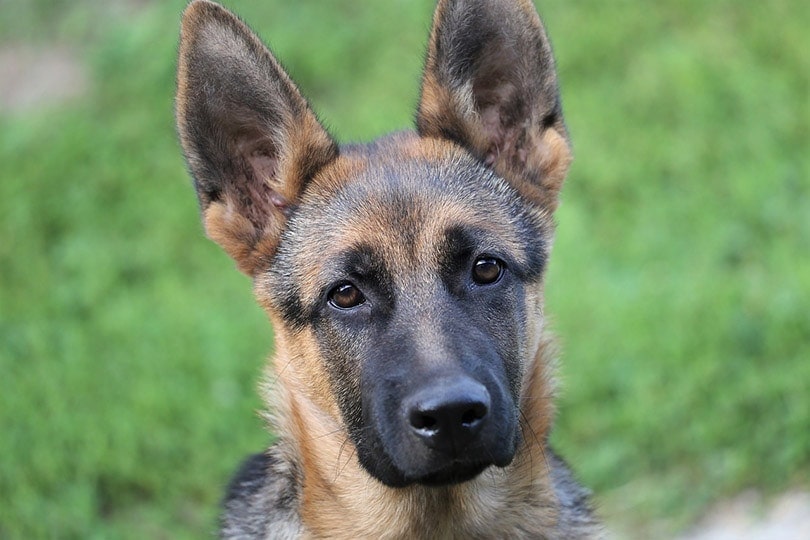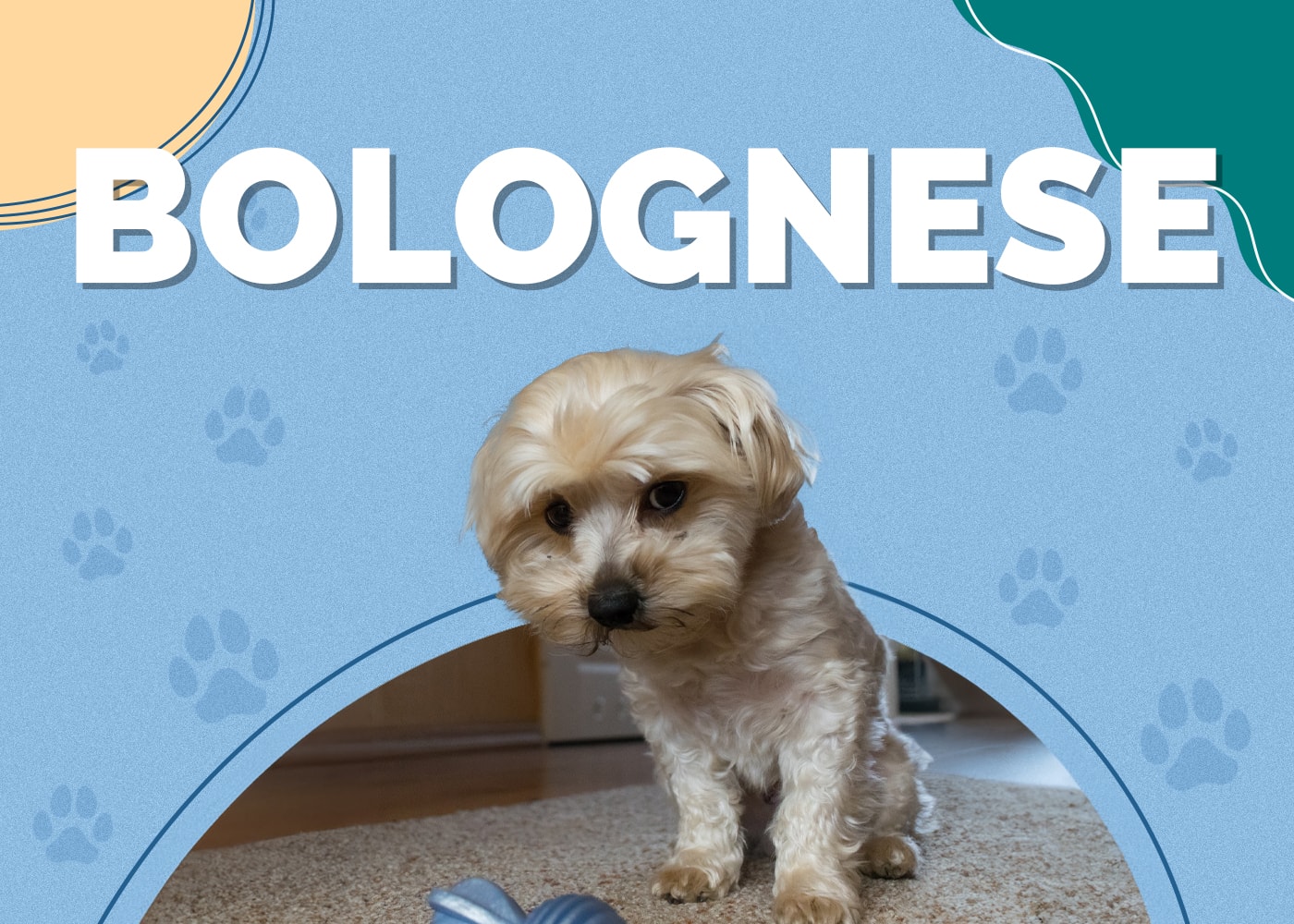Bullwhip Dog (Whippet Bulldog Mix): Info, Pictures, Characteristics & Facts

Updated on

Click to Skip Ahead
| Height: | 13-20 inches |
| Weight: | 20-60 pounds |
| Lifespan: | 12 to 15 years |
| Colors: | Beige, white, cream, pied, brown, black |
| Suitable for: | Families, active singles, apartments |
| Temperament: | Cheerful, happy, protective |
A Bullwhip is a designer dog breed that is a mix between two purebred dogs, a Bulldog and a Whippet. They are combined to bring out the best characteristics of the two dogs. The Bullwhip tends to be a calm and friendly breed. They can be skittish or aggressive, depending on which parent they favor and whether they are appropriately socialized.
These dogs are smart and can be challenging to train because their intelligence sometimes manifests in independence. It is essential to keep that in mind if you are considering this breed as a new dog owner.
Bullwhip Puppies
A Bullwhip puppy is quite affordable because they are a hybrid and not extremely popular. Most of the time, you can look at the parent breeds’ price to calculate the puppies’ ultimate cost. However, in this case, the price is much less than what a Whippet or a Bulldog would cost.
A Bullwhip puppy could be more expensive if one of the parents has a better pedigree or lineage, but these dogs aren’t used to sire hybrid offspring.
Wherever you decide to adopt your Bullwhip puppy, you must do your research and check them out. Doing so helps ensure that you aren’t being cheated and overall guarantees the better treatment of future dogs from good breeders.
To vet a potential breeder, ask if you can be taken for a tour around their breeding facility. Anywhere that the dogs are allowed to go into, you should be taken through and allowed to examine. Ensure that all these areas are clean and safe, so you can be assured of the dogs’ treatment.
Beyond looking into the training facility, ask for a look at the parent breeds and any registration or certification papers that they might have. Doing so can help establish the puppy’s parentage. Also, ask to see the vet records so you will be aware of any potential health issues that the puppy could inherit.
3 Little-Known Facts About the Bullwhip
1.Whippet-like dogs have been around for hundreds of years.
The Whippet is commonly thought to be a relatively new creation. Many people think that the Whippet came about sometime within the late 18th or early 19th centuries.
However, the Whippet’s true origination is relatively unknown, mainly because they appear similar to the Italian Greyhound. Smooth-coated dogs that resemble small Greyhounds have been pictured in paintings and even tapestries dating back to the 1400s.
Early Whippets, or Whippet-like dogs, were primarily used for hunting hares. The open field is this dog’s place to shine, since it allows them to unleash their speed and capacity to follow sneaky rabbits for many miles. They are not great at tracking a scent and following it, so they are not used for many other hunting types.
Part of the confusion between Whippets and Italian Greyhounds is that they were probably crossed frequently throughout their shared historical timeline. Sometimes they seem extremely similar, and at other points in history, they diverge.
Works of art that feature dogs that could be Whippets include Jean-Baptiste Oudry’s paintings from the early 1700s, the Unicorn tapestry in the 1400s, and a painting in the late 1700s by Edward Haytley.
2.The Whippet was known as the “poor man’s Greyhound.”
It is a challenge to pick out the time that the Whippet was entirely distinct from any other breed because they gained most of their notoriety in the 18th and 19th centuries.
Dogs that were Whippets, or at least Whippet-like, eventually made their way to Great Britain. Because they were largely unknown and were not heralded in any way, they became the poor man’s replacement for a Greyhound. Those who couldn’t afford to feed the larger hunting breed or invest in a puppy would adopt a Whippet. They were used as small game hunters to fulfill basic protein needs.
Their true fame came later, when they began to be used in “rag racing.” They had a tendency to be mesmerized by and chase a fluttering rabbit-skin. This sport was the forerunner of England’s lure coursing and track racing, which became wildly popular.
Since they were practically unheard of before that time, they were thought to be a “new” breed. They attracted nationwide attention because they excelled in the new sports and as a small game hunter.
3.Bulldogs were originally used for bull-baiting.
Bulldogs were used by the English as well. They were called Bulldogs because of their association with the sport of bull-baiting. At the time, these calm, family dogs were vicious attackers. They were bred with shorter legs and taught to stay low when facing the bull. The sport was cruel. The bull would be tethered to a pole and would try to defend itself, but often to no avail.
Bulldogs needed tremendous power in their jaw and a short muzzle to be successful at their sport. They had a ferocious temperament and seemed to be insensitive to pain. Bull baiting was extremely popular in the late 1700s and early 1800s but was made illegal shortly after.
The Cruelty to Animals Act of 1835 ended up being a lifesaver for this breed, to a certain extent. Unfortunately, after bull baiting became illegal, these dogs were effectively regarded as useless and largely discarded.
When they reached the brink of extinction, they began to be bred for work in slaughterhouses. As the association with bull-baiting wore off, they were also used as domesticated companions. It took many generations for dog lovers to refine the breed to what they are today, weeding out their aggressive tendencies.
Although Bulldogs are a lazy and gentle breed for the most part, they do need proper socialization to know how to behave around other humans and animals.

Temperament & Intelligence of Whip Dogs 🧠
The combination of the once ferocious Bulldogs and the small but lightning-fast Whippets is an interesting mix. The Bullwhip can inherit the tendency to be shy and antisocial from their Whippet parent or extremely friendly but sometimes aggressive from the Bulldog.
The blend of these two dogs often works out for the best, and you’ll get a dog that is more robust than a Whippet and has a healthier jaw and muzzle formation than a Bulldog. The Bullwhip often finds a balance between the extremely low energy of the Bulldog and the high, sprinting energy of the Whippet.
One essential aspect of this dog is their need for socialization. They can regress badly into one of their parents’ shyer or more aggressive tendencies if the owner isn’t careful.
Are These Dogs Good for Families? 🏡
These dogs are good for families but are best with people who are experienced dog owners. They need a relatively firm hand and consistent training. They can also be extremely stubborn, so having someone around who knows how to work with them is beneficial.
The combination of the friendly Bulldog and the attention-seeking Whippet makes the Bullwhip a wonderful companion for many families. They are smaller and less intimidating than a Bulldog, while maintaining their loyal attitude.
Does This Breed Get Along With Other Pets? 🐶 😽
The Bullwhip can often get along with other pets, though not always. The most important way to ensure their behavior is early socialization. They need plenty of training, and they should be taken out to meet new people and other animals from a young age.
Bullwhips have a high prey drive, inherited from the Whippet, so they need to be carefully monitored around small animals.
Things to Know When Owning a Bullwhip
Food & Diet Requirements 🦴
The Bullwhip is a small to medium-sized dog, depending on exactly how the short and stocky Bulldog and the small but tall Whippet combine. They are quite active dogs and should be fed a diet that suits their level of activity. They should be fed between 2 ½ and 3 cups of food each day.
It is best to split the Bullwhip’s food into two meals. Since they can inherit the Bulldog’s deep chest, they can suffer from indigestion and even bloating if not fed carefully.
Exercise 🐕
Exercise is vital for a Bullwhip because they can become destructive if left alone and without activity for too long. They need at least 45 minutes of activity each day. They are often a healthier version of a Bulldog, meaning they can better tolerate longer and more intense bouts of exercise.
You can take your Bullwhip with you to the dog park, bring them on walks, or go running and hiking with them. Try to aim for at least 8 miles a week if you consistently walk with them, to ensure that they are getting the amount of exercise that they need.
Training 🦮
Training a Bullwhip can be tricky because they are known to be somewhat stubborn. It is best to find some kind of food or treat that they love to motivate them to cooperate. It is this challenge to train them that makes them a better pet for experienced dog owners.
Patience and consistency are the best traits to have when you train a Bullwhip. They need plenty of praise when they do the right thing, so they can be aware of what they should and shouldn’t do. Never use any form of harshness when training a Bullwhip. You may find that it is best to get them professional training in the long run.
Grooming ✂️
The Bullwhip only needs a moderate amount of grooming because they tend to have a short coat of fur. Brushing them will also help release some of the shedding hairs and keep them from falling elsewhere.
Whip dogs can generate more of an odor than other dogs typically do. It is best to give them a bath every couple of months, but be careful with their skin because it is relatively sensitive and can break out in allergic reactions.
Beyond their coat, keep their nails clipped every several weeks, and brush their teeth two or three times each week. Keeping their droopy ears clean with a damp cloth is a good way to avoid ear infections.
Health and Conditions ❤️
The combination of a Bulldog and a Whippet often results in a healthier dog than the Bulldog parent and somewhat more than a Whippet. They can still struggle with joint and bone issues, and their diet should be watched carefully.
- Colitis
- Hip and elbow dysplasia
- Gastric torsion
- Entropion
Male vs. Female
There is currently no recognizable difference between males and females in this breed.
Final Thoughts
If you are an experienced dog owner with time and patience to give to this breed, then a Bullwhip can make an excellent family companion. They are often the best mix of the two parent breeds and are a healthier dog by being a hybrid. Even if their parents’ history is mysterious or has a bad reputation, it doesn’t mean that you can’t enjoy the wonderful dog that is the Bullwhip.
See Also:
- Whippet German Shepherd Mix: Info, Pictures, Characteristics & Facts
- Jackawhip (Whippet Jack Russell Terrier Mix): Info, Pictures, Characteristics & Facts
Featured image credit: Pixabay













